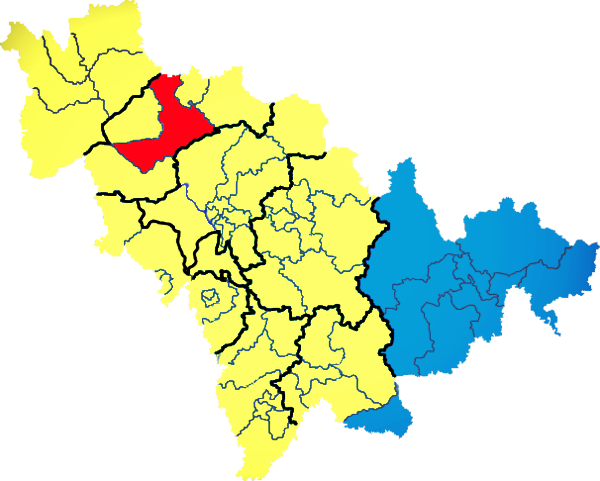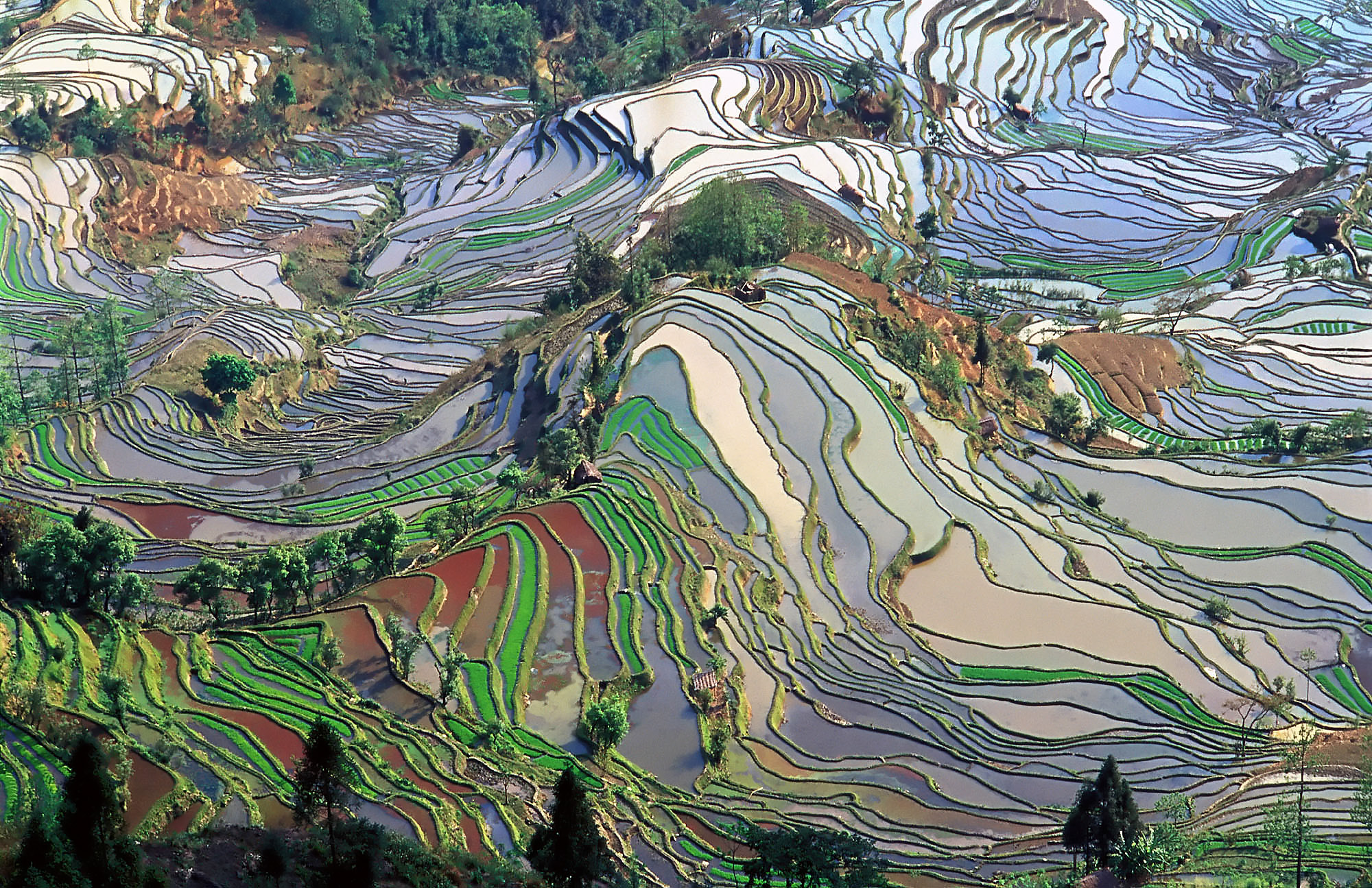|
Toudao, Helong
Toudao is a town in Helong, Yanbian, Jilin. Toudao Town administers Jiangbei Community, Jiangnan Community, Yanfeng Village, Mingxing Village, Sanhe Village, Longping Village, Longxin Village, Guangxin Village, Longhai Village, Longhu Village, Xinmin Village, Longyuan Village, Longshui Village, Changren Village, Longmen Village, Qinglong Village, Xinbei Village and Zhenxing Village. The population is 32,036 and there are 10,438 households. 75% of the total population are ethnically Korean Korean may refer to: People and culture * Koreans, people from the Korean peninsula or of Korean descent * Korean culture * Korean language **Korean alphabet, known as Hangul or Korean **Korean dialects **See also: North–South differences in t .... Toudao covers an area of 513 sq km. Toudao is known for its rice production. Three state-owned forest farms are located in Toudao. The Ancient Tombs at Longtoushan are located in Toudao. References Township-level divisions of Jilin ... [...More Info...] [...Related Items...] OR: [Wikipedia] [Google] [Baidu] |
Towns Of China
When referring to political divisions of China, town is the standard English translation of the Chinese (traditional: ; zh, p=zhèn , w=chen4). The Constitution of the People's Republic of China classifies towns as fourth-level administrative units, along with, for example, townships ( zh, s=乡 , p=xiāng). A township is typically smaller in population and more remote than a town. Similar to higher-level administrative units, the borders of a town would typically include an urban core (a small town with the population on the order of 10,000 people), as well as a rural area with some villages ( zh, labels=no, s=村 , p=cūn, or zh, labels=no, s=庄 , p=zhuāng). Map representation A typical provincial map would merely show a town as a circle centered at its urban area and labeled with its name, while a more detailed one (e.g., a map of a single county-level division) would also show the borders dividing the county or county-level city A county-level city () is a Count ... [...More Info...] [...Related Items...] OR: [Wikipedia] [Google] [Baidu] |
Helong
Helong (; Chosŏn'gŭl: 화룡; Hangul: 허룽) is a county-level city in southeastern Jilin province, Northeast China. It is under the administration of the Yanbian Korean Autonomous Prefecture. In January 2024, several thousand North Korean migrant workers in the city initiated a series of protests over withheld payments. Administrative divisions Helong has three subdistricts and eight towns. Subdistricts: * Wenhua Subdistrict (文化街道 / 문화가도) * Minhui Subdistrict (民惠街道 / 민혜가도) * Guangming Subdistrict (光明街道 / 광명가도) Towns: * Toudao (头道镇 / 두도진) * Bajiazi (八家子镇 / 팔가자진) * Fudong (福洞镇 / 복동진) * Xicheng (西城镇 / 서성진) *Nanping Nanping; historically known as Yanping ( zh, s=延平, poj=Iân-pêng is a third-tier prefecture-level city in northwestern Fujian province of China, Province, China, People's Republic of China. It borders Ningde to the east, Sanming to the sou ... (南坪镇 ... [...More Info...] [...Related Items...] OR: [Wikipedia] [Google] [Baidu] |
Yanbian
The Yanbian Korean Autonomous Prefecture is an autonomous prefecture in the east of Jilin Province, China. Yanbian is bordered to the north by Heilongjiang Province, to the west by Jilin's Baishan City and Jilin City, to the south by North Korea's North Hamgyong Province, and to the east by Russia's Primorsky Krai. Yanbian is designated as a Korean autonomous prefecture due to the large number of Koreans (Chaoxianzu) living in the region. The prefectural capital is Yanji and the total area is . The prefecture has an important Balhae archaeological sitethe Ancient Tombs at Longtou Mountainwhich includes the Mausoleum of Princess Jeonghyo. History In the Ming dynasty, Yanbian was governed by the Jianzhou Guard () and in the late Qing dynasty the area was divided into the Yanji () and Hunchun () subprefectures. From 1644 to 1800s, the Manchurian Qing state maintained a policy of disallowing Han Chinese immigration into traditionally Manchurian lands in order to ensure that th ... [...More Info...] [...Related Items...] OR: [Wikipedia] [Google] [Baidu] |
Jilin
) , image_skyline = Changbaishan Tianchi from western rim.jpg , image_alt = , image_caption = View of Heaven Lake , image_map = Jilin in China (+all claims hatched).svg , mapsize = 275px , map_alt = Map showing the location of Jilin Province , map_caption = Map showing the location of Jilin Province , coordinates = , subdivision_type = Country , subdivision_name = China , named_for = from ''girin ula'', a Manchu language, Manchu phrase meaning "along the river" , seat_type = Capital , seat = , seat1_type = , seat1 = , parts_type = Divisions , parts_style = para , p1 = 9 Prefectures of China, prefectures , p2 = 60 Counties of China, counties , p3 = 1006 Townships of China, townships , government_type = Provinces of China, Province , governing_body = Jilin Provinci ... [...More Info...] [...Related Items...] OR: [Wikipedia] [Google] [Baidu] |
Koreans
Koreans are an East Asian ethnic group native to the Korean Peninsula. The majority of Koreans live in the two Korean sovereign states of North and South Korea, which are collectively referred to as Korea. As of 2021, an estimated 7.3 million ethnic Korean diaspora, Koreans resided outside of Korea. Koreans are also an officially recognised ethnic minority in other several Continental and East Asian countries, including Koreans in China, China, Koreans in Japan, Japan, Koryo-saram, Kazakhstan, Koryo-saram, Russia, and Koryo-saram, Uzbekistan. Outside of Continental and East Asia, sizeable Korean communities have formed in Koreans in Germany, Germany, the British Koreans, United Kingdom, Koreans in France, France, the Korean Americans, United States, Korean Canadians, Canada, Korean Australians, Australia, and Korean New Zealanders, New Zealand. Etymology South Koreans refer to themselves as ''Hanguk-in'' or ''Hanguk-saram'', both of which mean "people of the Han". The ... [...More Info...] [...Related Items...] OR: [Wikipedia] [Google] [Baidu] |
Rice Production In China
Rice production in China is the amount of rice planted, grown, and harvested for consumption in the mainland of China. It is an important part of the national economy, where it is the world's largest producer of rice, making up 30% of global rice production. It produces the highest rice yields in Asia, at . Rice is produced throughout the nation and is believed to have been first domesticated in the surrounding regions of the Yangtze River and the Yunnan-Guizhou highlands of Southern China. Rice is believed to have been first cultivated around the Yangtze River Valley and Yellow River 11,000 years ago, and found upon clustering in the middle of the Yangtze River in the provinces of Hubei and Hunan in central China according to archaeological records. Rice production in China uses techniques, such as turning soil into mud to prevent water loss, as well as seed transplantation. The main variants of rice produced and grown in China encapsulates wild rice species of O. Mereriana, ... [...More Info...] [...Related Items...] OR: [Wikipedia] [Google] [Baidu] |
Forest Farming
Agroforestry (also known as agro-sylviculture or forest farming) is a land use management system that integrates trees with crops or pasture. It combines agricultural and forestry technologies. As a polyculture system, an agroforestry system can produce timber and wood products, fruits, Nut (fruit), nuts, other edible plant products, edible mushrooms, medicinal plants, ornamental plants, animals and animal products, and other products from both domesticated and wild species. Agroforestry can be practiced for economic, environmental, and social benefits, and can be part of Sustainability, sustainable agriculture. Apart from production, benefits from agroforestry include improved farm productivity, healthier environments, reduction of risk for farmers, beauty and aesthetics, increased farm profits, reduced soil erosion, creating wildlife habitat, less pollution, managing animal waste, increased biodiversity, improved soil structure, and carbon sequestration. Agroforestry practices ... [...More Info...] [...Related Items...] OR: [Wikipedia] [Google] [Baidu] |
Ancient Tombs At Longtou Mountain
The Ancient Tombs at Longtou Mountain are the burial sites of twelve royal figures from the Balhae (Bohai) kingdom. It is located on Longtou Mountain, southeast of Toudao Town () in Helong, Jilin Province, China, a region possibly called the "Western Field of the Ran Valley" () by the Balhae people. The mausoleum of Princess Jeonghyo is located here. History Construction on the first tombs at Longtou Mountain began sometime after 745, when King Mun moved the Balhae capital city to Junggyeong. The cemetery was in use until the end of the Balhae Kingdom. The discovery of Princess Jeonghyo's tombstone resolved speculation amongst scholars that the area was the former location of Hyundeok Province (顯德府) of the Balhae Kingdom. The site has been a Major Historical and Cultural Site Protected at the National Level since January 13, 1988. The walls and the murals of the tomb have been covered with anti-corrosive chemicals; at one point the tomb included at least one tower, but ... [...More Info...] [...Related Items...] OR: [Wikipedia] [Google] [Baidu] |


